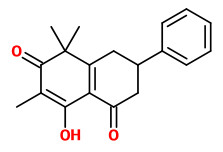Campomanesia lineatifolia Ruiz & Pav. - Myrtaceae - guabiroba (port.), guayaba de leche, palillo (spanish), champa, perfume guava, Champa
Small tree, native to Southern America (from Colombia, Ecuador, Peru to Brazil). The fruit owns a juicy pulp with sweet pleasant taste and aroma. Traditionally, mature yellow fruits are collected from the ground and eaten fresh or used to flavor beverages, desserts, and ice cream.

[Crecimiento y desarrollo del fruto de champa (Campomanesia lineatifolia Ruiz & Pavón)., Balaguera, H. E., Álvarez, J.G., Bonilla, D.C., Revista UDCA Actualidad & Divulgación Científica, 12(2), 2009, 113-123] http://www.scielo.org.co/scielo.php?pid=S0123-42262009000200012&script=sci_arttext&tlng=es
The methanol extract of C.lineatifolia seeds contained yellow pigments, the β-triketones champanone A and B, together with 2,3-dihydro-5-hydroxy-6,8,8-trimethyl-2-phenyl-4H-1-benzopyran-4,7(8H)-dione (champanone C).
[Champanones, yellow pigments from the seeds of champa (Campomanesia lineatifolia)., Bonilla, A., Duque, C., Garzón, C., Takaishi, Y., Yamaguchi, K., Hara, N., Fujimoto, Y., Phytochemistry, 66(14), 2005, 1736-1740]
In all of the volatile extracts from pulp, peels, leaves, and seeds of champa, β-triketones were detected as major constituents (between 50 and 60% of total extract).
„An odor profile description of volatiles isolated in all of the extracts was obtained by HRGC-O. These analyses showed that β-triketones contributed to the fruity, floral, and green odor notes in the flavor of fruit. Application of AEDA to pulp volatile extract revealed 2,5-dimethyl-4-methoxy-3(2H)-furanone, 2-phenylethanol, and 2,3-dihydro-5-hydroxy-6,8,8-trimethyl-2-phenyl-4H-1-benzopyran-4,7(8H)-dione (champanone C) to have the highest flavor dilution factors. In a similar way, (E)-cinnamyl alcohol, 2,5-dimethyl-4-methoxy-3(2H)-furanone, and 2,3-dihydro-5-hydroxy-6,8,8-trimethyl-2-phenyl-4H-1-benzopyran-4,7(8H)-dione (champanone C) were identified as key odorant compounds in the fruit peel volatile extract.“
[Characterization of odor-active volatiles in Champa (Campomanesia lineatifolia R. & P.)., Osorio, C., Alarcon, M., Moreno, C., Bonilla, A., Barrios, J., Garzon, C., Duque, C., Journal of agricultural and food chemistry, 54(2), 2006, 509-516]
Campomanesia lineatifolia leaves are frequently used for gastrointestinal disorders in traditional medicine in Brazil. Catechin and quercitrin were isolated by bioguided chromatographic fractionation from the ethanolic extract of this leaves. The gastroprotective activity investigated in two experimental models in rats indicated that the anti-ulcer effect is most likely mediated by scavenging free radicals due to the polyphenol content and, at least in part, by increasing the mucus secretion and the mucosal defense.
[Campomanesia lineatifolia Ruiz & Pav. as a gastroprotective agent., Madalosso, R.C., Oliveira, G.C., Martins, M.T., Vieira, A.E.D., Barbosa, J., Caliari, M.V., Tagliati, C.A., Journal of ethnopharmacology, 139(3), 2012, 772-779] http://www.sciencedirect.com/science/article/pii/S0378874111008816

